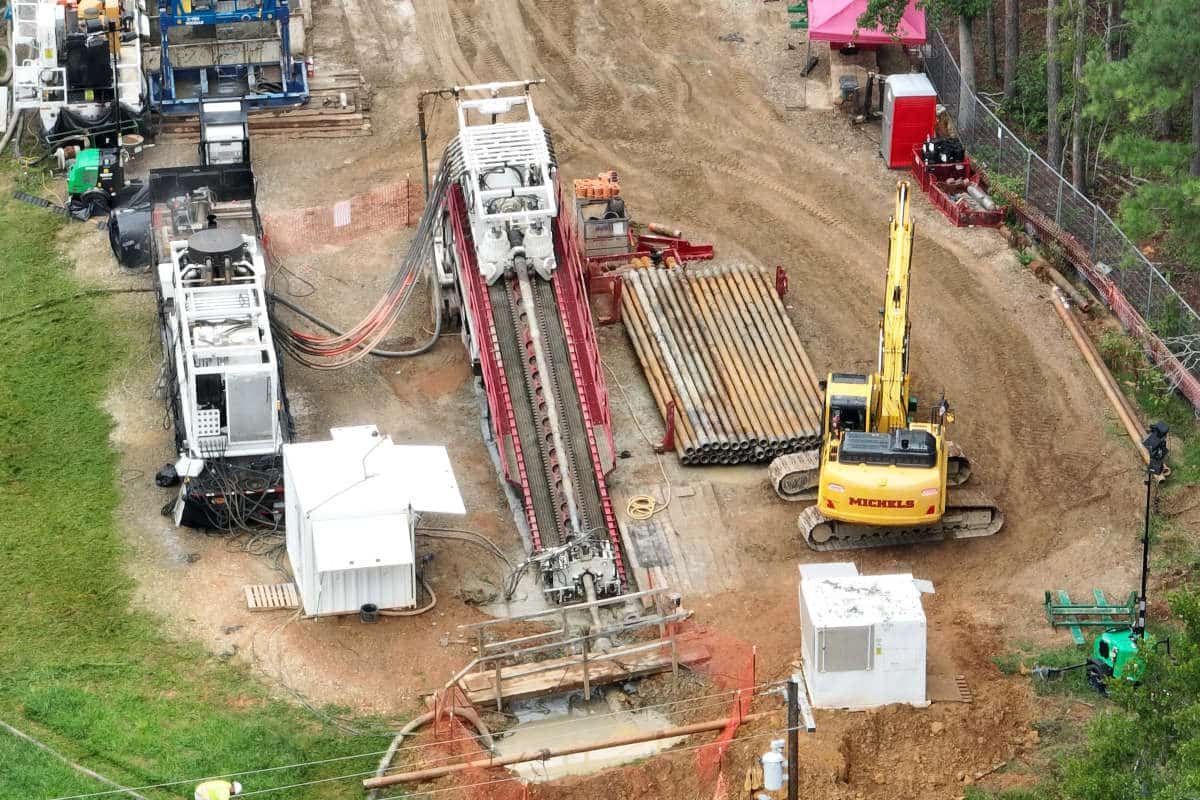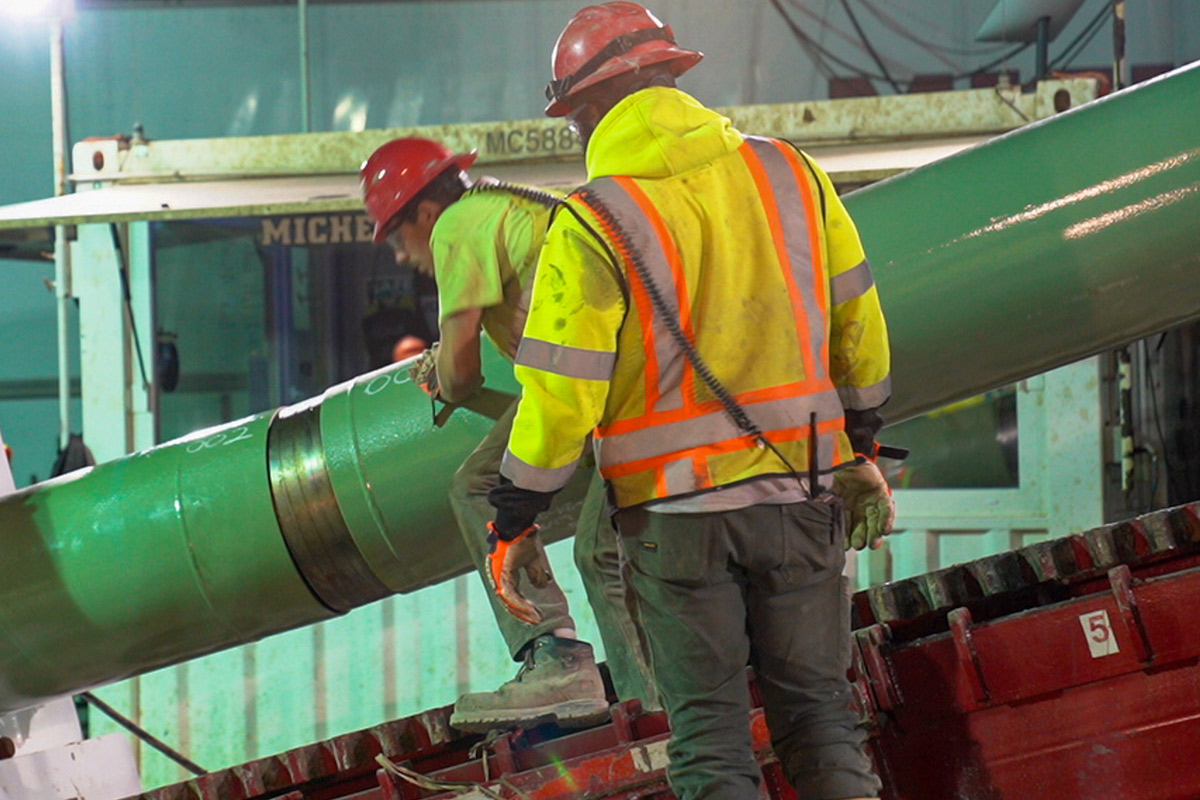Drill Master: Monitoring Your Solids
(Editor’s Note: This a “Classic Drillmaster,” first published in 2001. As the HDD market has seen new drillers enter the drilling fray, we thought the information presented remains timely and vital for drillers today.)
There is more solids removal equipment used in the HDD industry today than ever before. This is causing some problems. Some contractors are buying solids removal equipment without realizing that there are additional properties to be monitored.
Solids
There are two types of solids — beneficial solids and detrimental solids. The beneficial solids are bentonite and other drilling fluid additives. The detrimental solids are those that become entrenched in the fluid during drilling operations. The beneficial solids are not a concern. Drilled solids are. Solids in our fluids are like cholesterol in our blood. There is good cholesterol and bad cholesterol —there are good solids and bad solids in our re-circulated fluid.
There is still a belief that sand is the detrimental solid for pumps. Sand will kill a pump. However, there is too much emphasis being put on sand content alone in re-circulated drilling fluids. Sand is probably the easiest solid to remove because of its size. We are not downplaying sand content. On the other hand, we would like to re-emphasize the detrimental effects of solids smaller than sand.
Sand is not a mineral. Sand is a size, specifically 74 microns (200 mesh) and larger. Solids 73 microns in size and smaller fall into the category of fine solids or fines. It is the build-up of the fines that are, in many cases, being overlooked. Fines can do as much damage, if not more, to a pump than sand. We make this statement because there is usually a much higher fines content in these fluids than there is sand content.
Where do these fine solids come from? They usually result from drilling reactive soils such as clay or shale. However, this is not always the source. They can also occur in rock drilling, especially when drilling harder rock. They can be the result of harder tungsten carbide insert bits that tend to make smaller cuttings, sometimes more like dust or flour than chip-like cuttings.
How can we determine the total solids content of our fluids? Extremely simple tests can be run with almost no training needed. A mud balance can be used to determine the drilling fluid weight. From this determination, the solids content can be calculated. The following formula is used to calculate the total solids content of the fluid:
(Fluid weight, pounds per gallon – 8.33) x 8 = solids content, % of total volume
The average specific gravity of the solids at 2.5 is assumed in this formula. There are other methods used in the oilfield to determine solids content but they aren’t necessary in our industry because we’re not using weighted or oil-based fluids.
Sand content is also easily determined using a sand content test kit. Sand content is also reported in percentage of total volume. Sand content is a part of the total solids content that was calculated above.
Knowing the sand content and the total solids content are the two most important properties to know when operating solids removal equipment. Without knowing these values, we have no idea if our equipment is running properly and is doing its job. We have no idea if adjustments, such as screen size changes, need to be made. We have no indication that something is not working properly. An increase in fines may indicate that we need to look for wear on the impellers in our centrifugal pumps that would not be providing proper header or manifold pressure to our hydro-cyclones.
We will have tens of thousands of dollars invested in our re-circulating systems and mud pumps. For under $200, we can monitor the performance of our solids removal equipment and protect our pumps. Having this equipment on the rig, however, is not enough. The equipment has to be used on a regular, routine basis. We can see trends start happening before there is a problem or major breakdown.
Viscosity
Viscosity can also be a culprit in solids retention. Do not confuse viscosity with gel strengths. Gel strengths are necessary to maintain suspension of the cuttings in the borehole. However, the gel strengths are broken when the fluid comes under agitation through the pumps. Viscosity refers to the thickness of the fluid or slurry. Viscosity is not reduced through agitation. Thick, viscous fluids fight the solids removal equipment to retain the solids.
One of the problems we have is that drilled solids, especially fines, raise viscosity. A common occurrence in the field is checking viscosity and the viscosity increases without the addition of drilling fluid additives. Where is this viscosity increase coming from? The only source of the viscosity increase is fine solids build-up in the fluid. This then becomes a self-sustaining problem. We then dilute the fluid with water to reduce the viscosity. The detrimental solids replace the beneficial solids. What happens to our other drilling fluid properties such as filtration control, filter cake and gel strengths? They are either gone or are detrimentally influenced and the result is that we are left with a false sense of security.
Having pump problems? What is your solids content? If the solids content is 3 or 4 percent and has been maintained at that, you may have a pump problem. If your solids content is 9 or 10 percent, you may need to take a closer look at something else. The problem is probably what we are putting through the pump. When we mix a tank of drilling fluid and sent it through the borehole, the fluid we get back is not the same fluid.
Frank Canon, Baroid Industrial Drilling Products, is a member of the Drillmaster Editorial Board. All reports are reviewed by the board: Canon, Richard Levings, Ditch Witch; Ron Lowe, Myers-Aplex Industries; Ed Savage, Vermeer Corp.; and Trevor Young, Tulsa Rig Iron.




